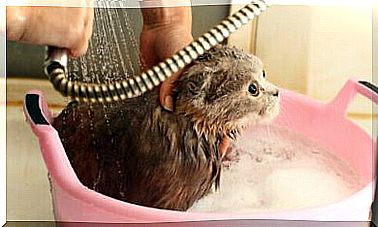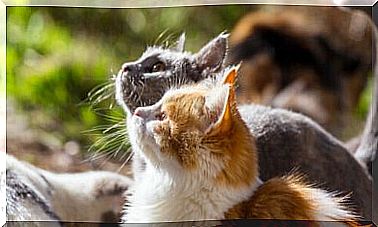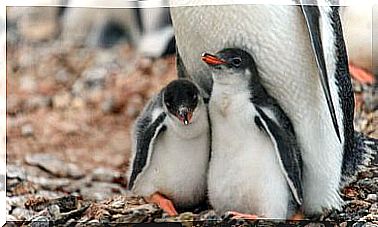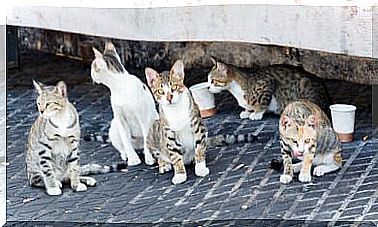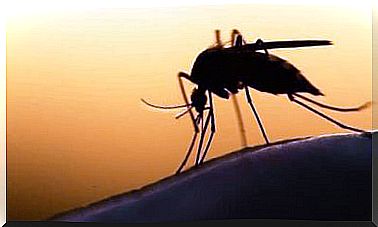Let’s Discover All The Characteristics Of The Capybara
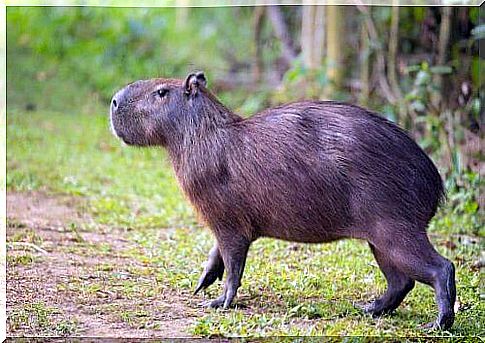
The capybara is one of the largest rodents in the world. It is also known as chigüire or carpincho, according to the geographical areas.
The name of this animal comes from the Guaraní Kapiÿva, the meaning of which is “lord of the passage”.
Its scientific name is “hydrochaeris”, a Greek word whose translation corresponds to “water pig”. Today we present the capybara, a unique animal.
Data sheet
- Genus: Hydrochoerus
- Species: Hydrochaeris
- Size: (adult) 1.1 to 1.3 meters approximately
- Weight: (adult) from 35 to 66 kg
- Height: (adult) from 50 to 64 cm
- Gestation period: 130 to 150 days
Main characteristics
It is a herbivorous animal. Its diet is based on forage and aquatic plants.
Occasionally it can include soft tree bark, fruit and berry, as well as sugar cane and corn.
The capybara practices coprophagia: occasionally ingesting their own excrements.
In this way, it can assimilate as many foods as possible and helps break down the cellulose of the herb.
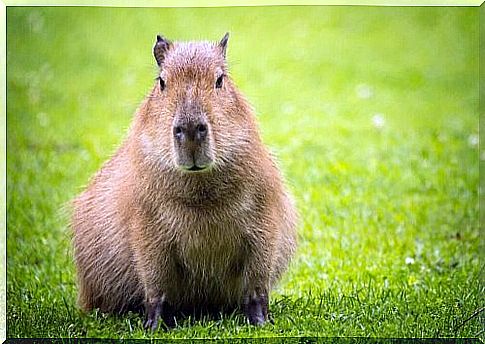
Which animals pose a threat to the capybara?
Its natural predators are felines such as the puma, the jaguar and the ocelot.
Also the caiman, the crocodile, the wild fox, the anaconda and the eel. It is a very particular rodent; among other things, he has a slow and clumsy gait.
Geographical distribution and natural habitat
The capybara lives in South America, always very close to a constant water source. The largest number of specimens are found in the plains between Colombia and Venezuela, but also north of Argentina and throughout the Amazon.
Lifestyle
It is a very sociable mammal. It can live in groups of up to 30 members, mainly as safety measures to protect itself from predators.
In addition to mating several times throughout the year, it does so more often during the rains of April and May.
The packs consist of a dominant male surrounded by various females and their cubs.
There is usually no more than one male in the same group, as only one claims the right to reproduce with females.
The capybara sleeps little. Almost always in the morning in the bushes by the rivers. Around noon, after rolling in the mud, try to fight off the high temperatures.
These rodents communicate with each other through vocalizations. When danger is present, they make an alarm sound very similar to a dog’s barking.
They also purr similar to that of a cat, as a sign of submission. Screeching whistles, grunts or loud noises that are used to indicate happiness.
Curiosity
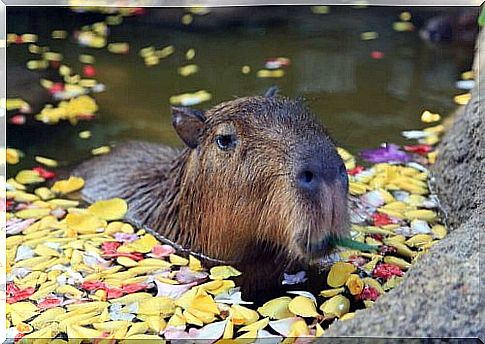
To distinguish males from females, the olfactory gland located above the muzzle must be observed.
The former have a whitish and sticky substance in this area; a concentrate that they use to mark their dominance over the rest of the group members.
The capybara lives under a hierarchical system. To rise within the group, male members constantly struggle.
These are also promiscuous, having many companions over the course of their lives. Even if the number of these will always be proportional to the ability to come out victorious in the fights.
Is the capybara chosen as a pet?
This is a species that has been shown to live as a pet. Some individuals learn to follow simple orders such as sitting or patiently waiting for food to be served.
In addition, it is an extremely docile animal. He loves receiving the cuddles of his owners, as well as being in the company of other animals, such as dogs or cats.
In captivity it needs sufficient water where it can fully immerse itself whenever it wishes.
On the contrary, he runs the risk of suffering from skin diseases; pathologies that can become very serious or irreversible.

